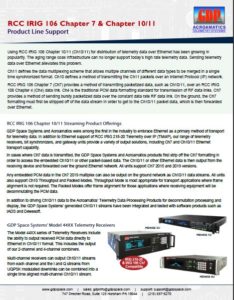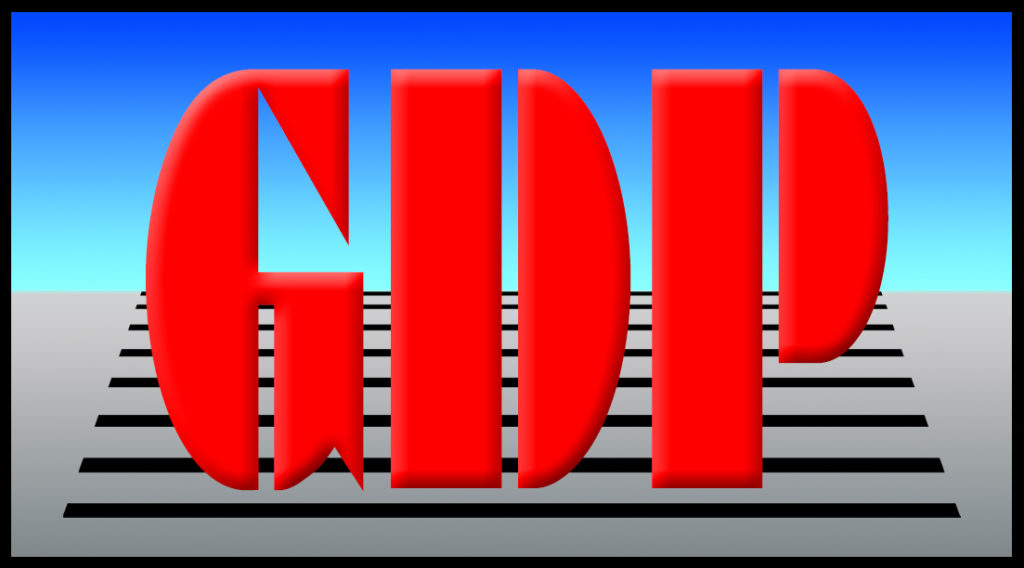 Using RCC IRIG 106 Chapter 10/11 (Ch10/11) for distribution of telemetry data over Ethernet has been growing in popularity. The aging range coax infrastructure can no longer support today’s high rate telemetry data. Sending telemetry data over Ethernet alleviates this problem. Ch11 defines the data multiplexing scheme that allows multiple channels of different data types to be merged in a single time synchronized format. Ch10 defines a method of transmitting the Ch11 packets over an Internet Protocol (IP) network. RCC IRIG 106 Chapter 7 (Ch7) provides a method of transmitting packetized data, such as Ch10/11, over an RCC IRIG 106 Chapter 4 (Ch4) data link. Ch4 is the traditional PCM data formatting standard for transmission of RF data links. Ch7 provides a method of sending bursty packetized data over the constant data rate RF data link. On the ground, the Ch7 formatting must first be stripped off of the data stream in order to get to the Ch10/11 packet data, which is then forwarded over Ethernet.
Using RCC IRIG 106 Chapter 10/11 (Ch10/11) for distribution of telemetry data over Ethernet has been growing in popularity. The aging range coax infrastructure can no longer support today’s high rate telemetry data. Sending telemetry data over Ethernet alleviates this problem. Ch11 defines the data multiplexing scheme that allows multiple channels of different data types to be merged in a single time synchronized format. Ch10 defines a method of transmitting the Ch11 packets over an Internet Protocol (IP) network. RCC IRIG 106 Chapter 7 (Ch7) provides a method of transmitting packetized data, such as Ch10/11, over an RCC IRIG 106 Chapter 4 (Ch4) data link. Ch4 is the traditional PCM data formatting standard for transmission of RF data links. Ch7 provides a method of sending bursty packetized data over the constant data rate RF data link. On the ground, the Ch7 formatting must first be stripped off of the data stream in order to get to the Ch10/11 packet data, which is then forwarded over Ethernet.
IRIG 106 Chapter 7 & Chapter 10/11 TMoIP Support
 Using RCC IRIG 106 Chapter 10/11 (Ch10/11) for distribution of telemetry data over Ethernet has been growing in popularity. The aging range coax infrastructure can no longer support today’s high rate telemetry data. Sending telemetry data over Ethernet alleviates this problem. Ch11 defines the data multiplexing scheme that allows multiple channels of different data types to be merged in a single time synchronized format. Ch10 defines a method of transmitting the Ch11 packets over an Internet Protocol (IP) network. RCC IRIG 106 Chapter 7 (Ch7) provides a method of transmitting packetized data, such as Ch10/11, over an RCC IRIG 106 Chapter 4 (Ch4) data link. Ch4 is the traditional PCM data formatting standard for transmission of RF data links. Ch7 provides a method of sending bursty packetized data over the constant data rate RF data link. On the ground, the Ch7 formatting must first be stripped off of the data stream in order to get to the Ch10/11 packet data, which is then forwarded over Ethernet.
Using RCC IRIG 106 Chapter 10/11 (Ch10/11) for distribution of telemetry data over Ethernet has been growing in popularity. The aging range coax infrastructure can no longer support today’s high rate telemetry data. Sending telemetry data over Ethernet alleviates this problem. Ch11 defines the data multiplexing scheme that allows multiple channels of different data types to be merged in a single time synchronized format. Ch10 defines a method of transmitting the Ch11 packets over an Internet Protocol (IP) network. RCC IRIG 106 Chapter 7 (Ch7) provides a method of transmitting packetized data, such as Ch10/11, over an RCC IRIG 106 Chapter 4 (Ch4) data link. Ch4 is the traditional PCM data formatting standard for transmission of RF data links. Ch7 provides a method of sending bursty packetized data over the constant data rate RF data link. On the ground, the Ch7 formatting must first be stripped off of the data stream in order to get to the Ch10/11 packet data, which is then forwarded over Ethernet.

